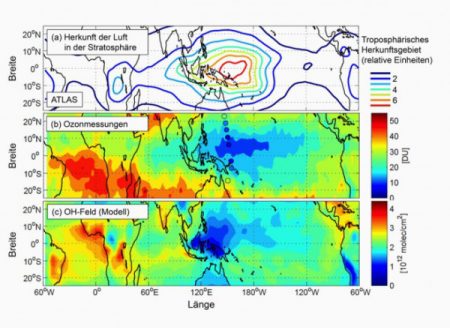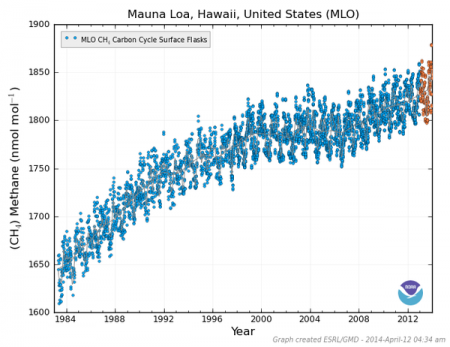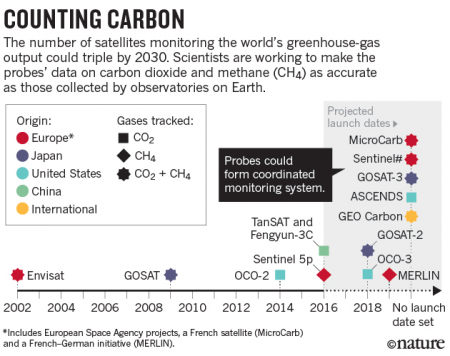December 12, 2016 – More potent in the short term than carbon dioxide (CO2), methane (CH4) has recently spiked in the atmosphere reaching concentrations of 1,830 parts per billion. Where is the methane coming from ask scientists. Likely agriculture is the prime source followed by the fossil fuel industry and melting permafrost.
I’ve written about methane emissions from cattle and other ruminants in previous postings. But another agricultural source is wetland rice cultivation. At American Geophysical Union meetings this week in San Francisco, CH4 will be very much a topic of discussion. A team of researchers headed by Marielle Saunois and Philippe Bousquet are presenting their study of CH4 from 2000 to 2012. It is a synthesis of global and regional CH4 emissions and sinks over the period of time previously described. It looks at atmospheric measurements, chemistry and emission inventories and provides possible explanations for what has been an observed “sustained atmospheric increase since 2007.” They also note that CH4 emissions have accelerated in 2014 and 2015 (10 parts per billion increase in two years).
States Robert Jackson, Stanford University, “CO2 is still the dominant target for mitigation, for good reason. But we run the risk if we lose sight of methane of offsetting the gains we might make in bringing down levels of carbon dioxide.” And whereas CO2 interacts with more than the atmosphere (for example the ocean and forests acting as carbon sinks) CH4 is exclusively an atmospheric phenomenon. The bulk of CH4 remains in the low atmosphere known as the troposphere where it chemically reacts with hydroxyl radicals to produce water vapour and CO2. About 500 million tons of CH4 get emitted into the lower atmosphere annually.
Are there CH4 sinks other than the atmosphere?
Trees and other plants are carbon sinks. When they die and get buried in sediments they trap that carbon. In the high Arctic vast amounts of CH4 are frozen within the tundra, kettle lakes and morass that cover the landscape. As long as these areas remain in a permanently frozen state, or permafrost, they are an effective trap for the gas.
Natural wetlands act as a CH4 sink in the same way rice paddies interact with the gas. The organic carbon store in wetlands can easily be disrupted by flooding or drought, or in the case of Arctic wetlands, by melting.
Fossil fuel reservoirs are also CH4 sinks and as we extract them we release the gas in significant quantity.
The ocean floor in many areas of our planet contain deposits of frozen methane hydrates that some resource developers want to exploit to produce natural gas. Tapping into these potentially volatile deposits can turn them from a sink to an enormous contributor of CH4 emissions.
And finally there is little understood rocks called authigenic carbonates containing large microbial populations that act as a CH4 sink.
How potent is CH4 as a greenhouse gas?
CO2 and CH4 are the equivalent of the classical tale, “The Tortoise and the Hare.” CO2 is the tortoise. It can persist in the atmosphere for a millennia or longer gradually contributing to warming. CH4, on the other hand, is the hare, short and intense. CH4 has 80 times the heat potential of a CO2 molecule. In the presence of aerosols CH4 its heat potential increases to a 105 times that of CO2. Unlike CO2, it persists for less than a decade before altering chemically (the hydroxyl radical response).
CO2 in interacting with other gases precipitates out. It can sink into the ocean or bind with sandstone to form limestone. Not CH4.
It almost exclusively only interacts within the atmosphere. There is evidence of that reaction having a profound negative impact of late. A hydroxyl shield hole opened up over the Western Pacific in the spring of 2014. And because hydroxyl radicals reside at the top of the troposphere, in reacting with CH4 the hole contributed to volatile emissions reaching into the stratosphere and the lengthening of the atmospheric lifespan of CH4.

Tracking CH4 is Necessary to Understand Its Climate Change Impacts
GHGSat is one of a small fleet of Earth observation satellites currently monitoring greenhouse gas emissions. It joins Japan’s GOSAT launched in 2009 which tracks both CO2 and CH4. NASA’s OCO-2 launched in 2014 tracks CO2. But by 2030 we should see several CH4 tracking satellites originating from Europe, China, Japan and the United States. The infographic below provides timelines for these vital orbiting observatories which will help us better understand CH4’s growing impact on climate.
Even better than the existing satellites, this next generation will do far more than measure CO2 and CH4 in the overall atmosphere. They will also pinpoint the source of emissions, highly useful for mitigation and adaptation policy makers.










